5 tips for using a vacuum cleaner more efficiently - little-known hacks to speed up cleaning and get the most out of your machine
Make your vacuum work harder so you don’t have to
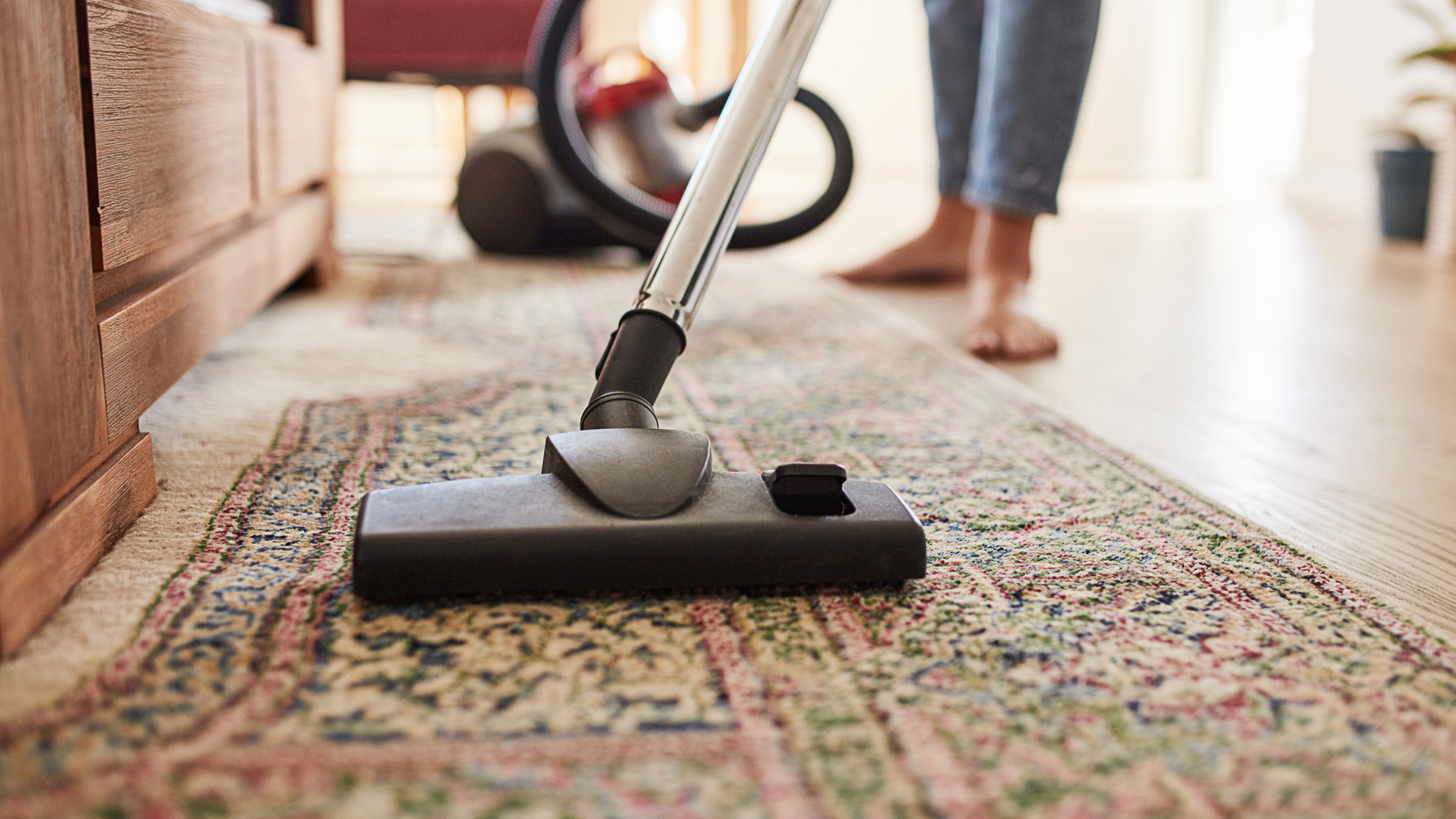

A vacuum cleaner is one of the best cleaning tools to have in your arsenal. And while successfully cleaning your home starts with choosing the best vacuum cleaner for the job, it’s down to you to make the most of the hacks for using a vacuum cleaner more efficiently.
Understanding how to vacuum isn’t rocket science, but the reality is that there’s a lot more to vacuuming than meets the eye. After all, you can’t just push the machine around your home and hope for the best. You need to use the right tools for the job, the proper technique, and you need to know how to use a vacuum efficiently… while cleaning your home effectively at the same time.
Thankfully, there are some tricks of the trade for using a vacuum cleaner more efficiently, and we’ve reached out to experts in the industry to share them with you. So, take your pick and watch the magic happen.
1. Declutter first
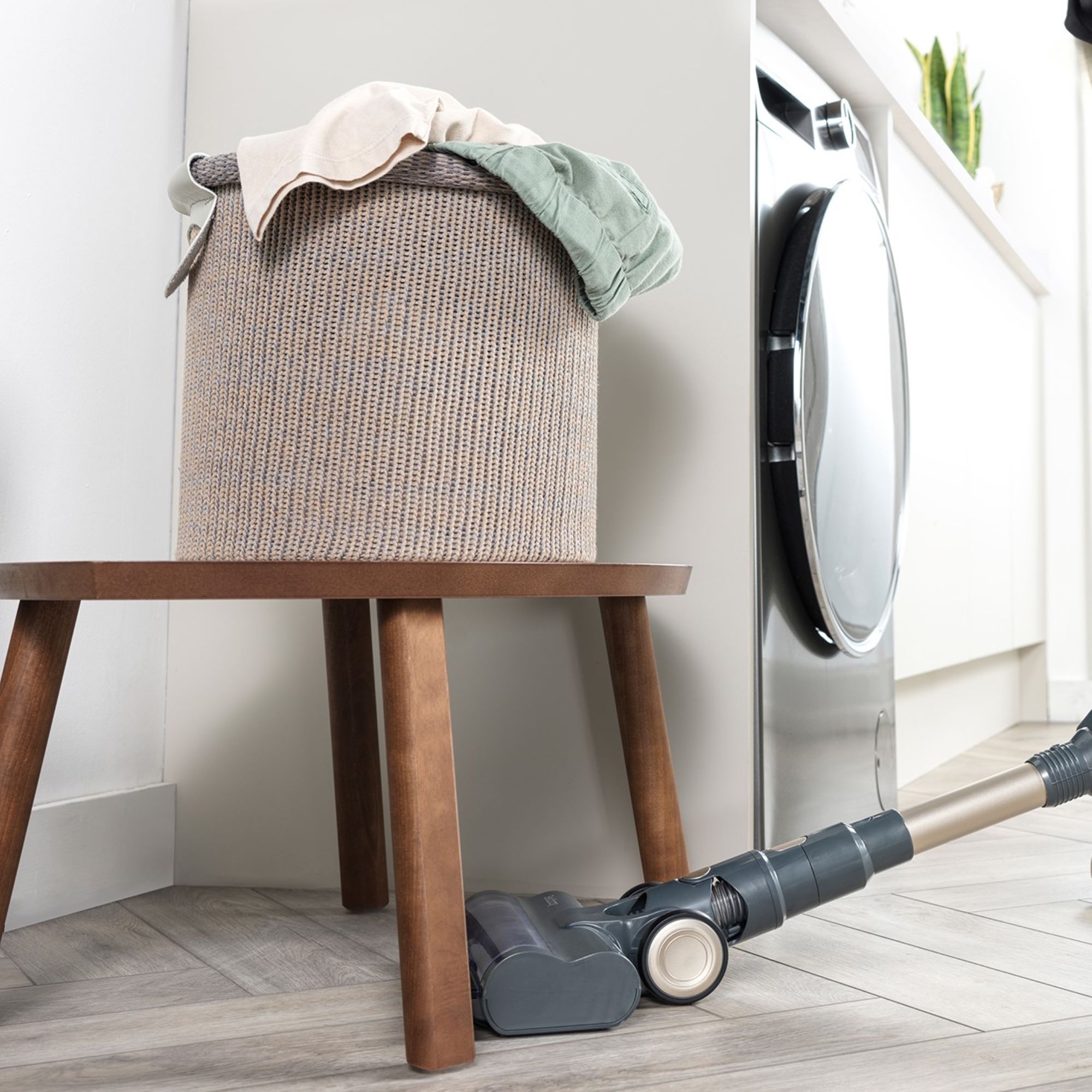
You probably don’t want to add another cleaning job to your to-do list when you've already convinced yourself to get the vacuum out. However, decluttering your home (or just your room) before vacuuming is one of the best ways to use a vacuum cleaner more efficiently. You’ll probably thank yourself for it, too.
This is echoed by Paul Bagwell, CEO and Founder of Halo, who says, ‘Many of us are guilty of simply vacuuming around our furniture, which can leave a couch- or chair-shaped outline of dust on your floors. To get the most thorough clean of your floors possible, be sure to nudge your furniture fixtures to the side and vacuum their spots on the floor as you go.’
In doing this, you’ll also be able to clean the places that most people are forgetting to vacuum, making your home cleaner and safer for your whole family. So, pick a decluttering method that works for you and go from there.
2. Use the correct attachments
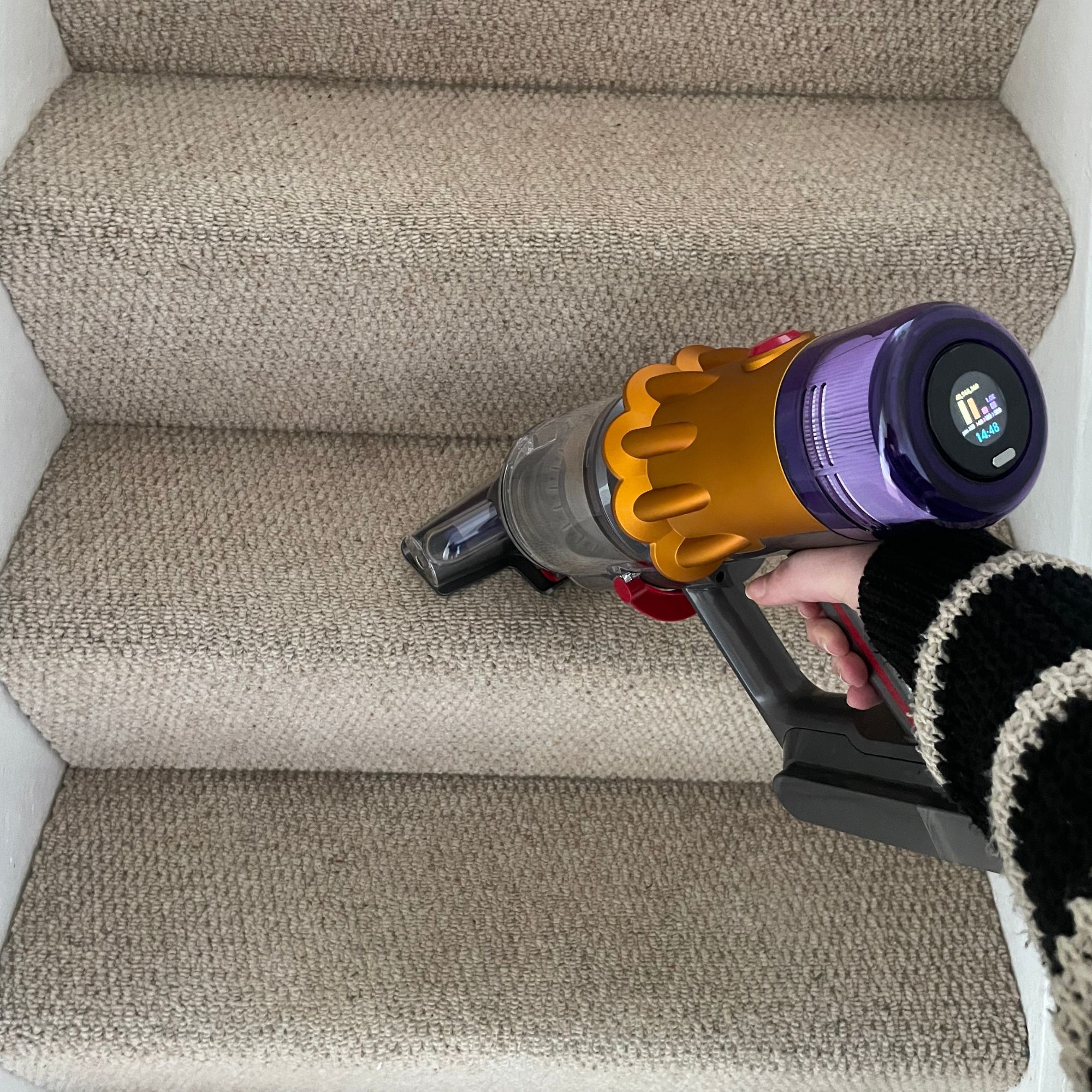
Some vacuum cleaners come with attachments as standard, but most people don’t understand what vacuum tool is right for each job. As a result, they’re not using their vacuum cleaner as efficiently as they could.
Get the Ideal Home Newsletter
Sign up to our newsletter for style and decor inspiration, house makeovers, project advice and more.
Of course, vacuum cleaner attachments do vary depending on the brand and model - and you need to remember that most vacuum attachments aren’t universal. Still, most vacuum brands will offer hard floor rollers, upholstery tools, and crevice tools as standard.
As you can tell by the name, the hard floor roller is specifically designed for cleaning hard flooring, like laminate flooring. Paul says, ‘Hard floor rollers have a soft brush that will do wonders for leaving your laminate floor with a ‘polished’ looking sheen.’
The upholstery tool is just as self-explanatory. It is ideal for cleaning a sofa, mattress, or any other soft furnishings in your home. Many of these tools also come with bristles, allowing you to remove deep-rooted hair from these areas.
Then, Paul describes the crevice tool as ‘a secret vacuuming weapon.’ He says, ‘Suitable for all floor types, these long nozzles are designed to get into every nook and cranny of your home – including your skirting boards, underneath your refrigerator, hard-to-reach air vents, behind your sofa, the back of the radiator, and more.’
So, by utilising all of the tools available, you can really make the most of what your machine has to offer while also giving your home a deeper clean.
3. Tailor your technique to the task
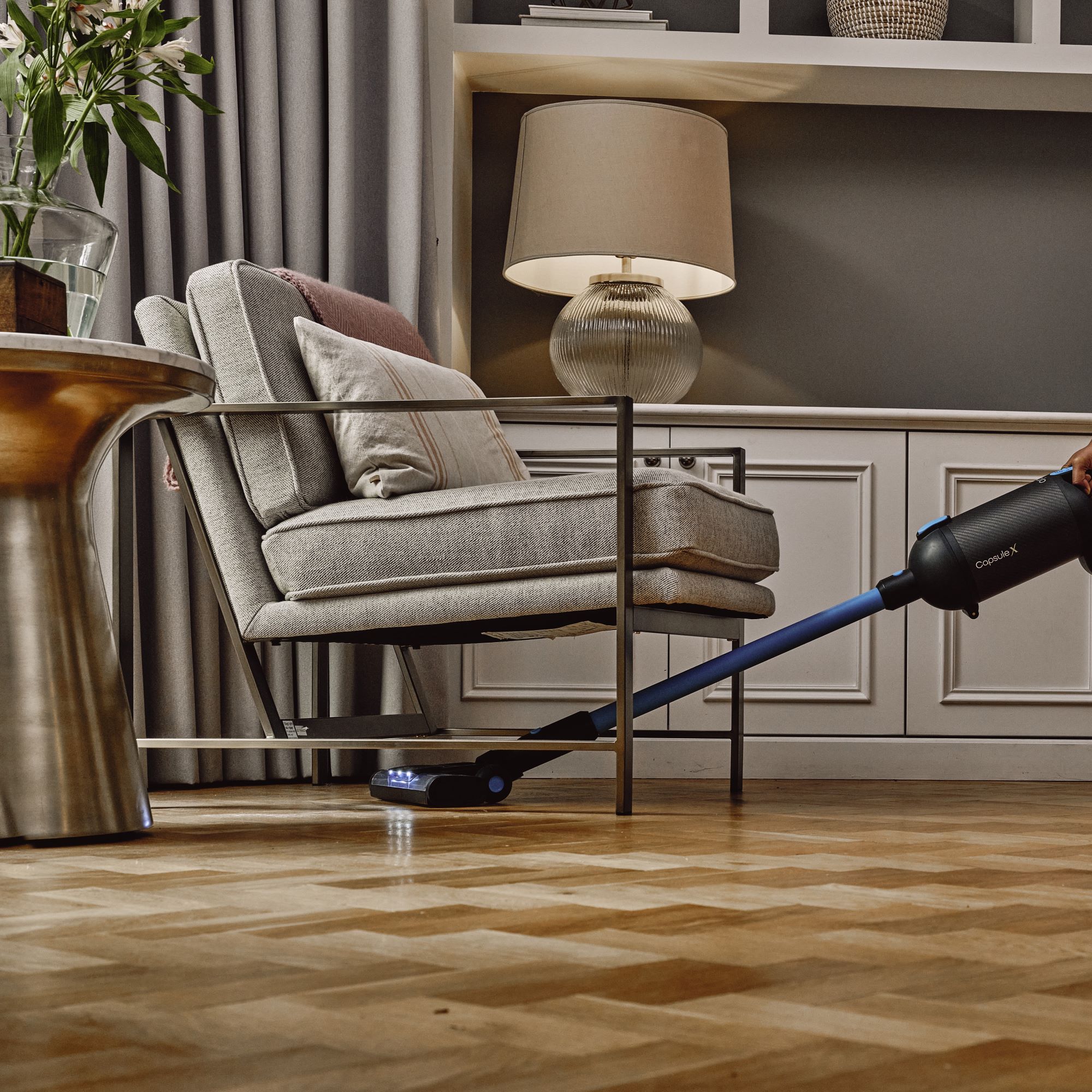
You might think that knowing how to vacuum is a one-size-fits-all task, but that’s not the case. For example, giving your home a once-over is very different to vacuuming pet hair. Because of this, it’s a good idea to tailor your vacuuming technique to the task at hand - and the best way to do this is to first focus on your flooring type.
If you have wooden floors in your home, Natalie Mudd, Co-Founder & Creative Director, Knot & Grain suggests using a lighter touch and ensuring you always use the right attachments to prevent any damage.
She says, ‘When caring for an engineered wooden floor, it is key to ensure it stays dust-free; a great way of doing this is to use a vacuum. Use a soft brush attachment vacuum to remove dirt, dust, or debris from the surface. This will prevent scratches and damage caused by particles that can get trapped under furniture or foot traffic.’ You should avoid vacuuming in too many different directions, too, to prevent scratching.
You can normally opt for a tougher approach when vacuuming carpet - but once again, this largely depends on the type of carpet you have. In fact, Catrin Davies, Senior Product Manager SDA Hoover, suggests that ‘if your carpet is a delicate fabric, check with the manufacturer to make sure it’s ok first.’
If you know that you have a wool carpet, however, Kirsty Barton, Marketing Manager at Alternative Flooring advises, ‘For long-term vacuuming, just use the suction-only (with the rotating brushes switched off) as the beater bar may be too harsh on the loops.’
The same can also be said for natural plant fibres such as jute, sisal, or coir carpets or rugs, as Kirsty says that ‘using a vacuum with a brush can be a little harsh on natural fibres. So, vacuum slowly and thoroughly.’
Then, if you want to get pet hair out of carpet, it’s best to vacuum back and forth a number of times to loosen any dirt or debris embedded deep into the fibres.
4. Preserve your power
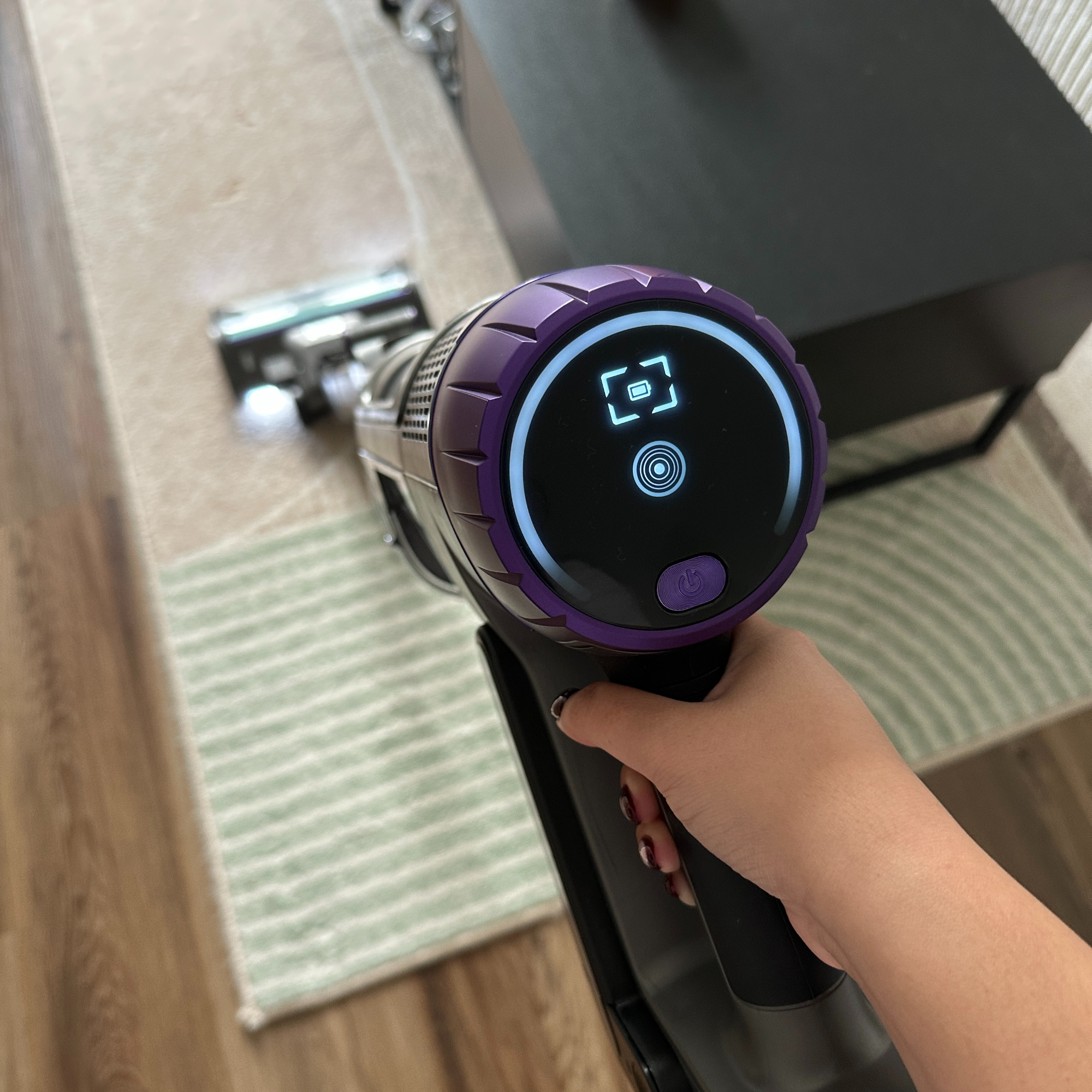
Just as there are many things you can do to make your vacuum cleaner last longer, there are also many things you can do to use it more efficiently. Preserving its power is one of them - especially if you have a vacuum with multiple power modes. After all, using the wrong settings is one of the biggest vacuuming mistakes you can make.
Paul says, ‘For owners of vacuums with dual power settings, it can be very tempting to use the boosted power all the time for the deepest, most thorough clean. This can, however, be damaging your vacuum’s battery life – in both the short and long term.’
He adds, ‘Prolonged use of the boosted power setting on any vacuum will minimise its power and runtime, giving you less flexibility when cleaning your house. What’s more, not all areas of your home will benefit from higher power – for hardwood floors and linoleum, stick to the regular power setting for a perfectly thorough clean that will help preserve your vacuum’s battery life.’
5. Clean and maintain your vacuum cleaner
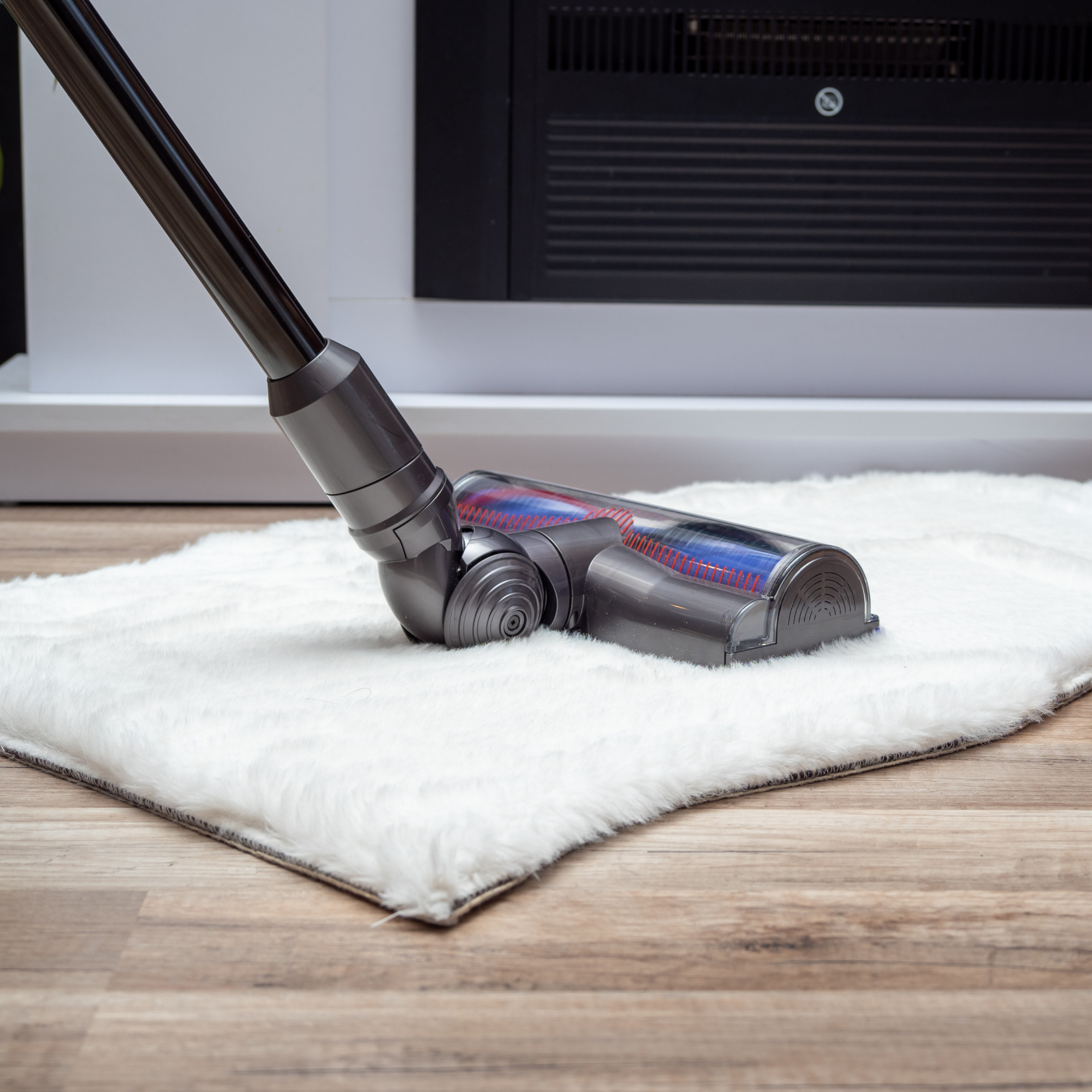
If you want to use a vacuum cleaner more efficiently, you first need to have a fully functioning machine. That’s why knowing how to clean a vacuum cleaner is key.
And while regularly emptying the dust bin (or throwing away the vacuum bags if you opt for a bagged vacuum cleaner) and cleaning the brush rolls are important, cleaning you vacuum cleaner filter is perhaps the most essential step in this process.
We have guides on how to clean a Dyson filter or a Shark vacuum filter, but as Catrin explains, ‘Appliances vary, so make sure to check your instruction manual.’
She adds, ‘Usually the filters can be removed and washed with tap water – don’t use any detergent or soap, as this could cause damage. Leave the filters to dry for at least 24 hours before putting them back in the vacuum.’
You should aim to do this at least once a month to use your vacuum cleaner as efficiently as possible every time. If not, you may find that your vacuum starts to smell and loses suction, affecting your ability to clean your home.

Crowned the 'best overall' vacuum cleaner in our guide, this Dyson is the cream of the crop. With a 70-minute run time, sleek build, and impressive suction power on carpets, it'll be extremely efficient in your home.
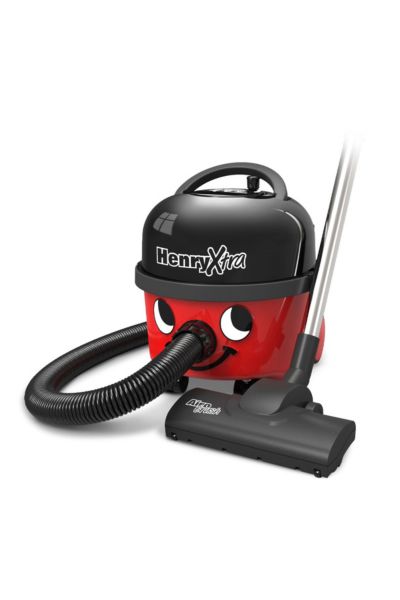
You can't go wrong with a Henry, and the Xtra is a workhorse that will efficiently clean your home for years on end. Plus, it has one of the biggest capacities we've ever come across.
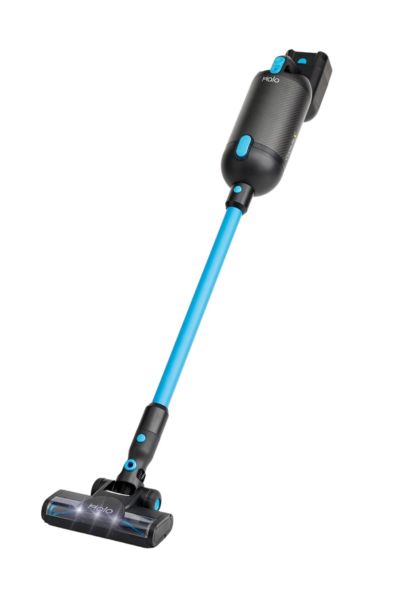
If you live with pets, the Halo Capsule X is one of the best we've tested for pet hair. It's a cordless bagged vacuum cleaner, which means it doesn't require too much maintenance either.
FAQs
Should you vacuum first or last?
If you plan to dust and vacuum your home on the same day, you should always vacuum last. After all, dusting dislodges dust particles - and while a large portion of these dust particles will be caught in the duster itself, many are also thrown into the air before falling onto the floor. So, by vacuuming afterwards, you can pick up these loose particles.
Is it better to vacuum fast or slow?
While you may be inclined to get your vacuuming over and done with as soon as possible, it’s always better to vacuum slowly. This will allow you to get the most out of your machine while also offering you the cleanest home in return.
A major reason why experts suggest vacuuming slower is because many surfaces in the home require a gentler touch, and the act of vacuuming quickly could cause damage - especially to more vulnerable carpet fibres.
By vacuuming slowly, you can also ensure that you’re picking up as much dirt, dust, debris, and hair as possible, which could be missed if you vacuum quickly. This is echoed by Atit Chopra, Product Development Director at Beldray, who says, ‘Vacuuming in slow, overlapping strokes can improve efficiency; rushing can miss dirt and require repeat passes.’
Try these tweaks to your vacuuming routine, and see the difference it makes to your home.

Lauren Bradbury has been the Content Editor for the House Manual section since January 2025 but worked with the team as a freelancer for a year and a half before that. She graduated with a Bachelor’s degree in English and Creative Writing from the University of Chichester in 2016. Then, she dipped her toe into the world of content writing, primarily focusing on home content. After years of agency work, she decided to take the plunge and become a full-time freelancer for online publications, including Real Homes and Ideal Home, before taking on this permanent role. Now, she spends her days searching for the best decluttering and cleaning hacks and creating handy how-to guides for homeowners and renters alike, as well as testing vacuums as part of her role as the Ideal Home Certified Expert in Training on Vacuums, having spent over 110 hours testing different vacuum models to date!
-
 Should your front door colour match your hallway? Interior experts reveal 3 reasons why it should (and 3 reasons it shouldn't)
Should your front door colour match your hallway? Interior experts reveal 3 reasons why it should (and 3 reasons it shouldn't)Are you team matching or contrasting?
By Ellis Cochrane
-
 This £200 limited-time discount makes this Dyson vacuum cheaper than I’ve ever seen it - run don’t walk to Argos for this bargain
This £200 limited-time discount makes this Dyson vacuum cheaper than I’ve ever seen it - run don’t walk to Argos for this bargainIt's the most affordable Dyson on the market right now
By Lauren Bradbury
-
 Martin and Shirlie Kemp’s pastel flower beds has given their Victorian renovation a romantic look - how you can get the look
Martin and Shirlie Kemp’s pastel flower beds has given their Victorian renovation a romantic look - how you can get the lookTheir pastel garden is the cottage garden inspo you've been looking for
By Kezia Reynolds
-
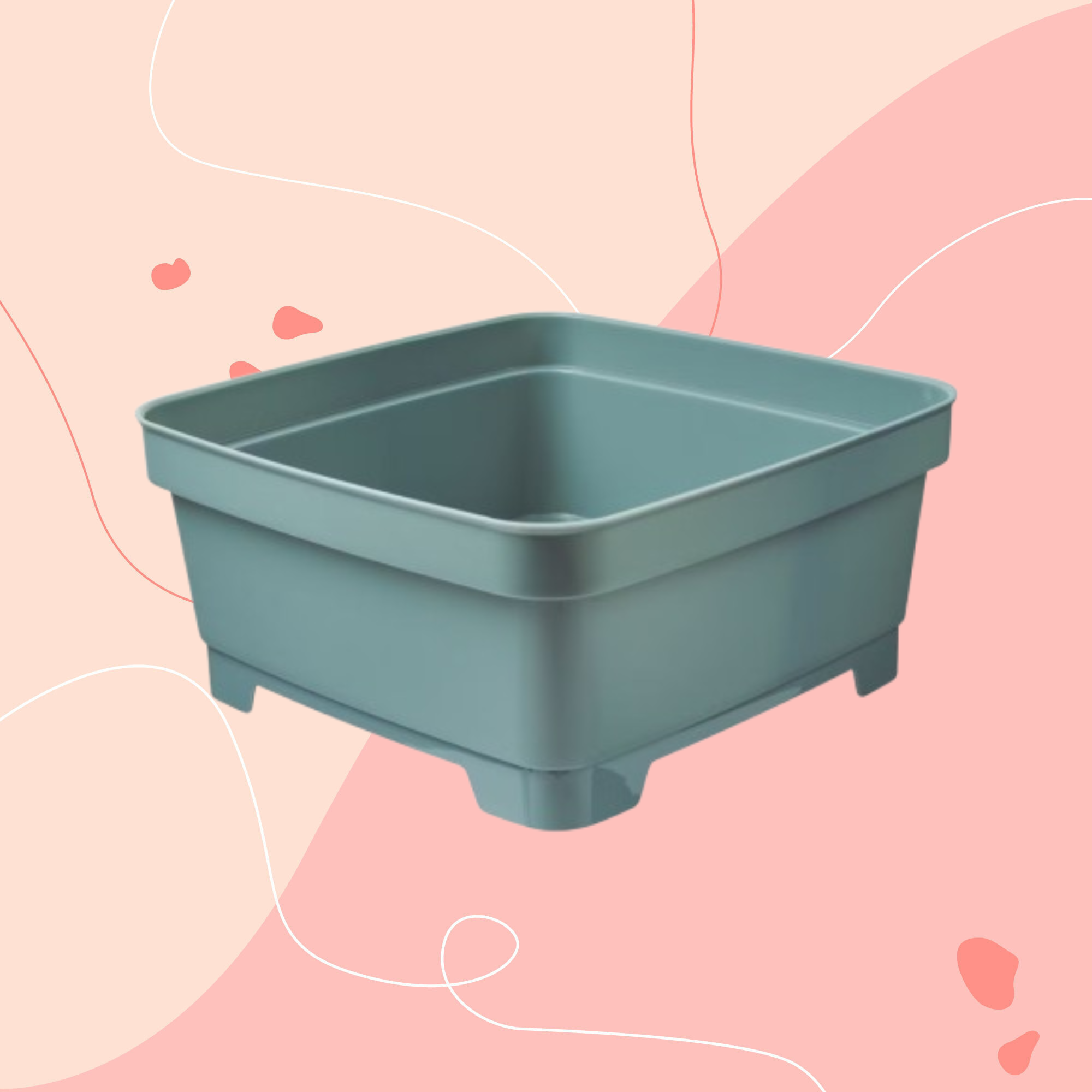 Aldi is releasing a budget alternative to the cult Joseph Joseph washing up bowl – it’s just £4.99
Aldi is releasing a budget alternative to the cult Joseph Joseph washing up bowl – it’s just £4.99The Joseph Joseph washing up bowl is an Ideal Home favourite - now we can't wait to try Aldi's alternative
By Kezia Reynolds
-
 I just bought my first home, and this £10 buy was the very first thing I bought for it to make it feel warmer and secure
I just bought my first home, and this £10 buy was the very first thing I bought for it to make it feel warmer and secureIf I did it all again, this would still be my very first buy
By Rebecca Knight
-
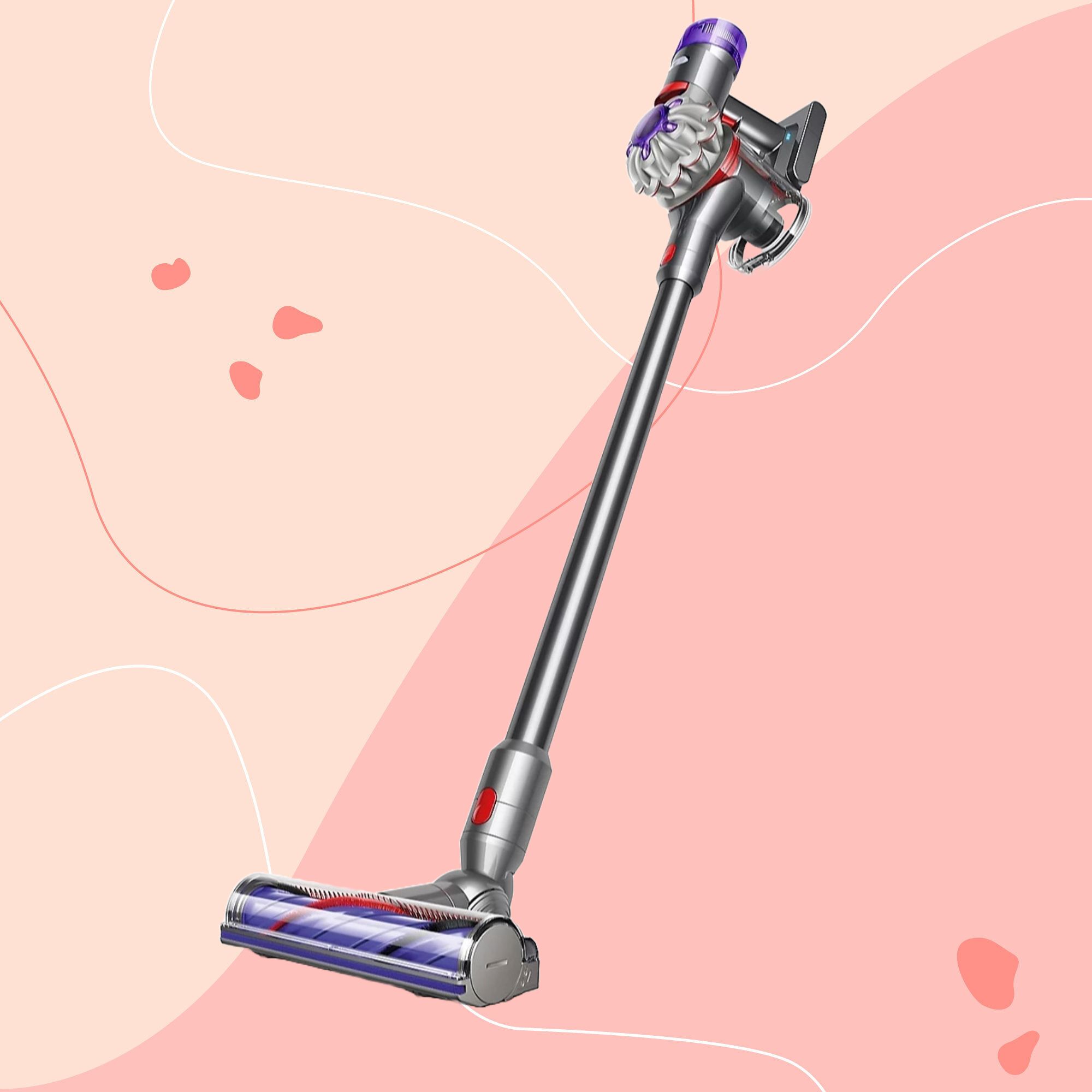 It’s normally impossible to find a Dyson vacuum for under £250 — but QVC has slashed the price of their bestselling models for a limited time
It’s normally impossible to find a Dyson vacuum for under £250 — but QVC has slashed the price of their bestselling models for a limited timeRun don’t walk to pick up the brand’s bestselling model for under £230 before it sells out
By Lauren Bradbury
-
 Catherine Zeta-Jones has revealed the cleaning product she swears by to keep her home fresh - and it’s just £8 on Amazon
Catherine Zeta-Jones has revealed the cleaning product she swears by to keep her home fresh - and it’s just £8 on Amazon'I use it on my counters. I use it on my walls. I use it on my doors. When I smell it, I know my house is clean.'
By Kezia Reynolds
-
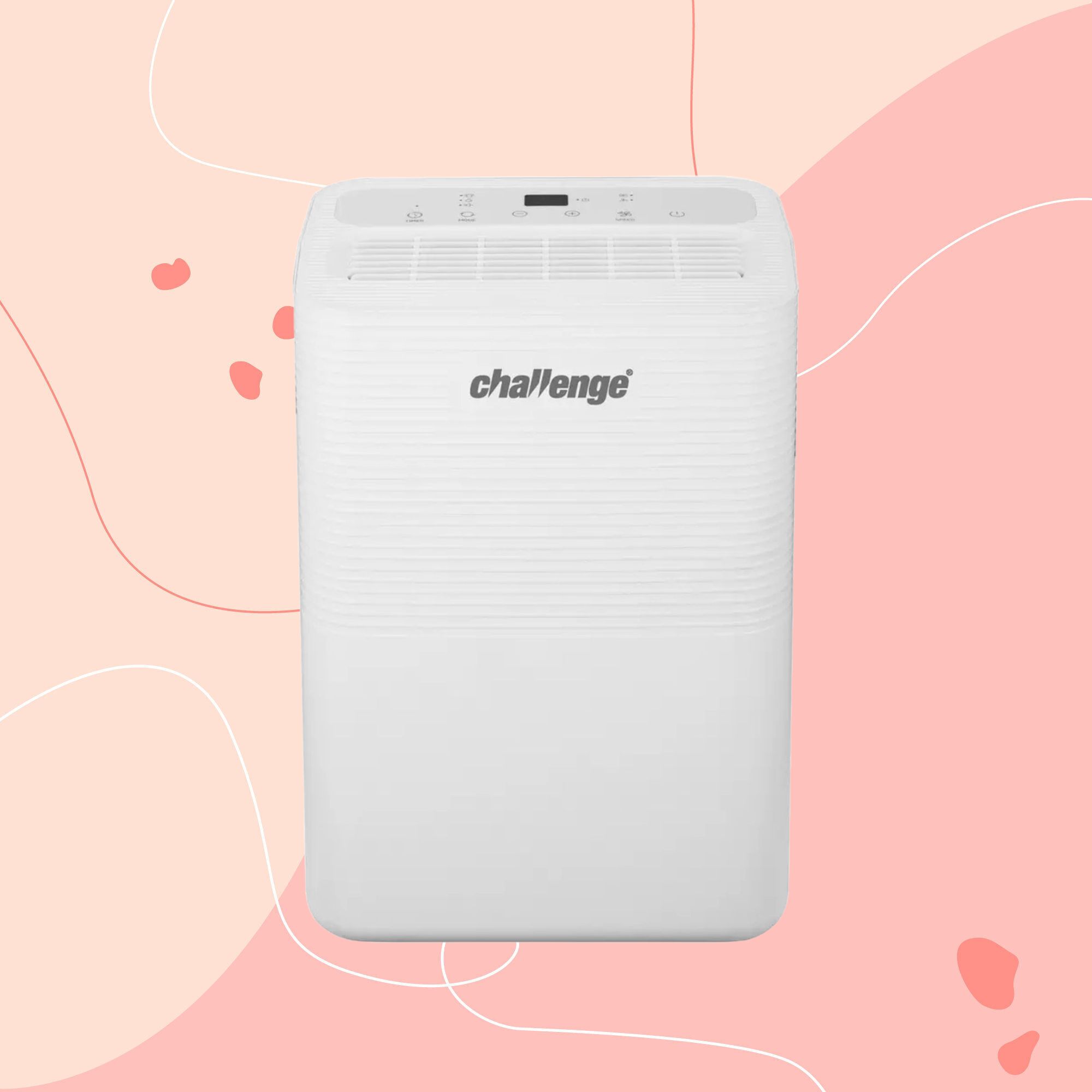 I tested the 12L Challenge dehumidifier in my damp Victorian home over winter — I haven’t spotted any signs of mould for the first time in five years
I tested the 12L Challenge dehumidifier in my damp Victorian home over winter — I haven’t spotted any signs of mould for the first time in five yearsThe Challenge 12L dehumidifier doesn’t have too many bells and whistles, but I can already see the difference it’s made to my damp home
By Lauren Bradbury
-
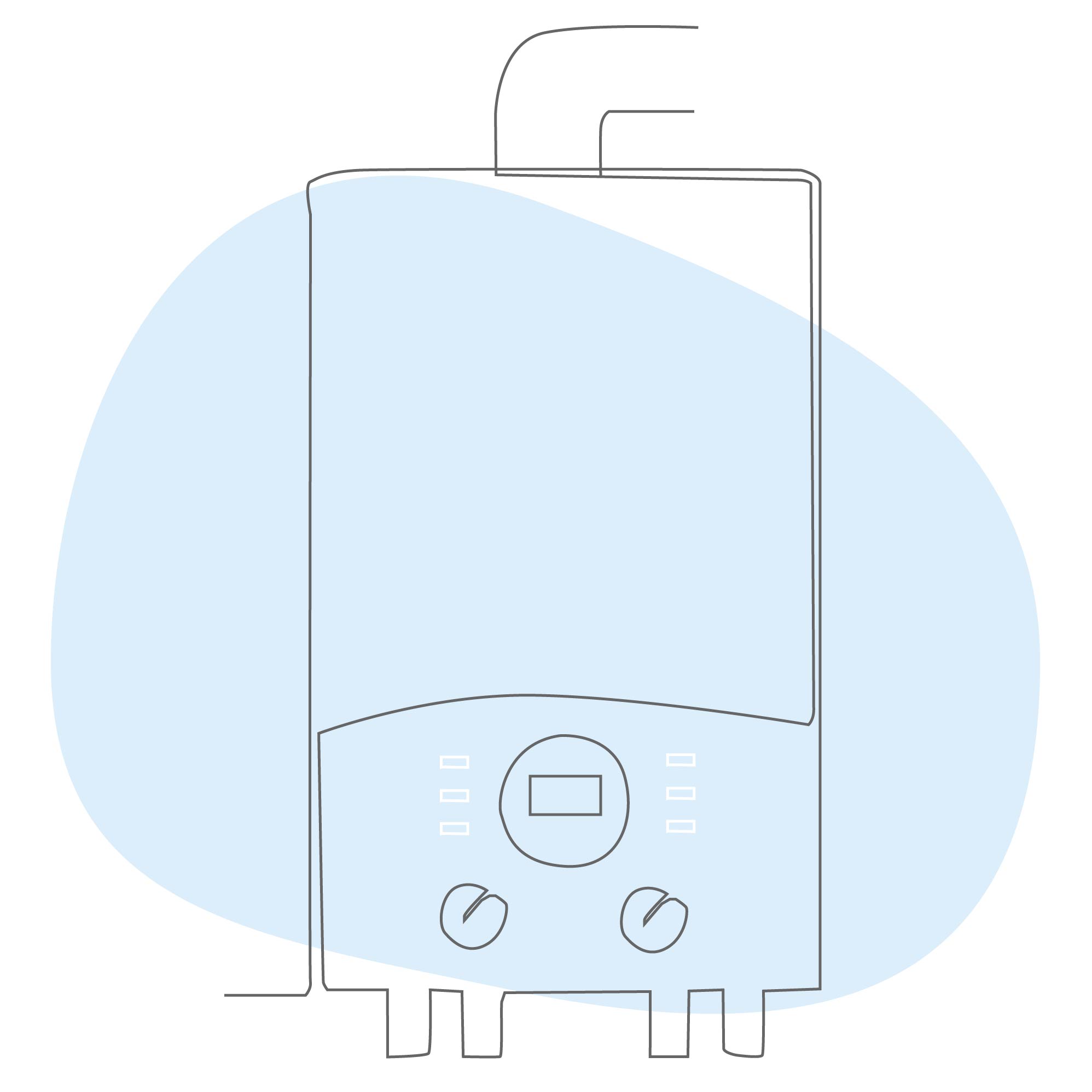 What is boiler flow temperature? Heating experts urge you to check yours now as you could be overpaying on your energy bills
What is boiler flow temperature? Heating experts urge you to check yours now as you could be overpaying on your energy billsTurning this little-known number down just a few degrees can result in some serious savings
By Lauren Bradbury
-
 Stacey Solomon has shared 5 nifty wardrobe storage hacks to make getting ready in the morning easier — and they're genius
Stacey Solomon has shared 5 nifty wardrobe storage hacks to make getting ready in the morning easier — and they're geniusThese five wardrobe storage hacks are a gamechanger
By Katie Sims
-
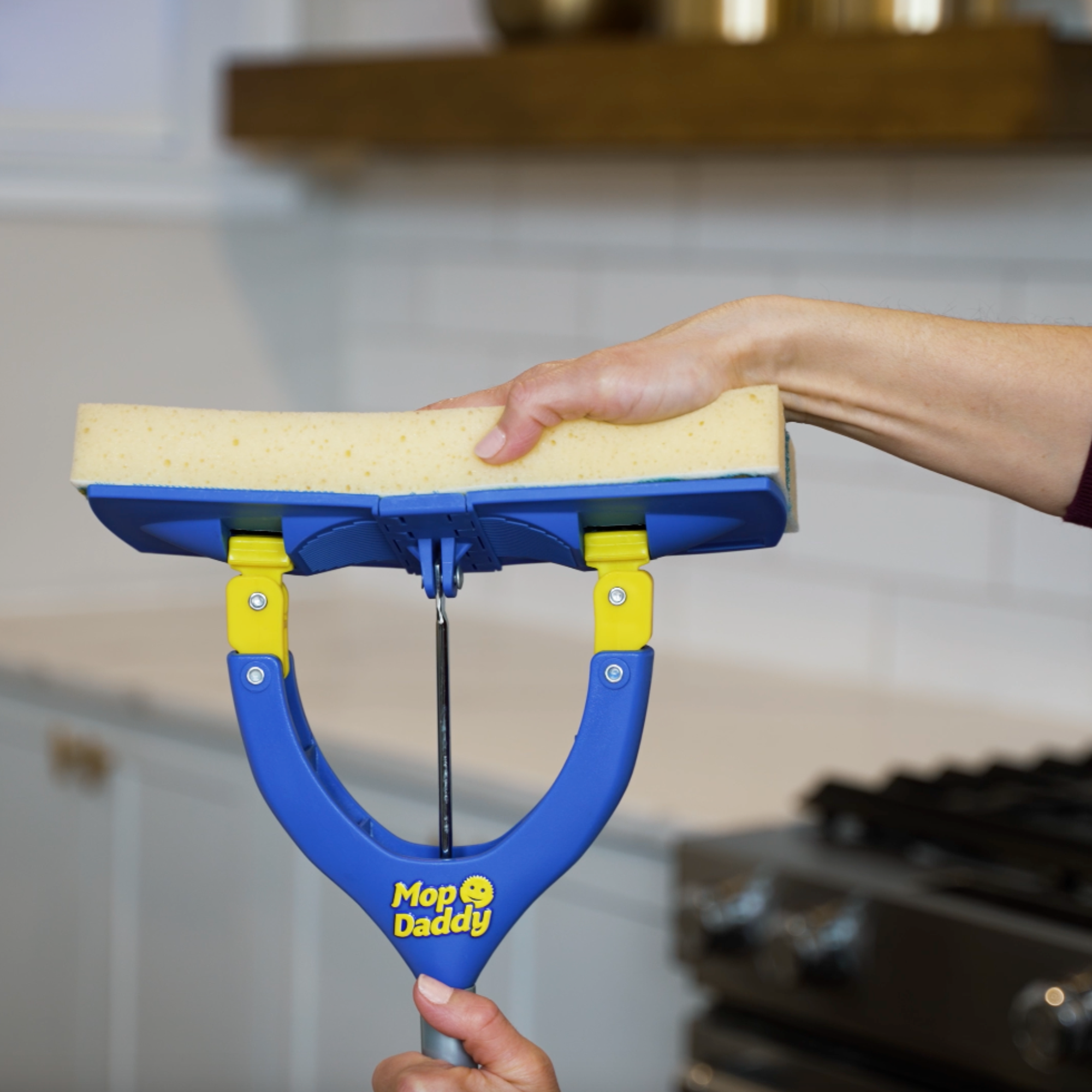 Cult cleaning brand Scrub Daddy has just launched a brand new butterfly mop — could it be the ultimate solution for banishing stubborn marks on your floor?
Cult cleaning brand Scrub Daddy has just launched a brand new butterfly mop — could it be the ultimate solution for banishing stubborn marks on your floor?We're obsessed with all things Scrub Daddy
By Kezia Reynolds